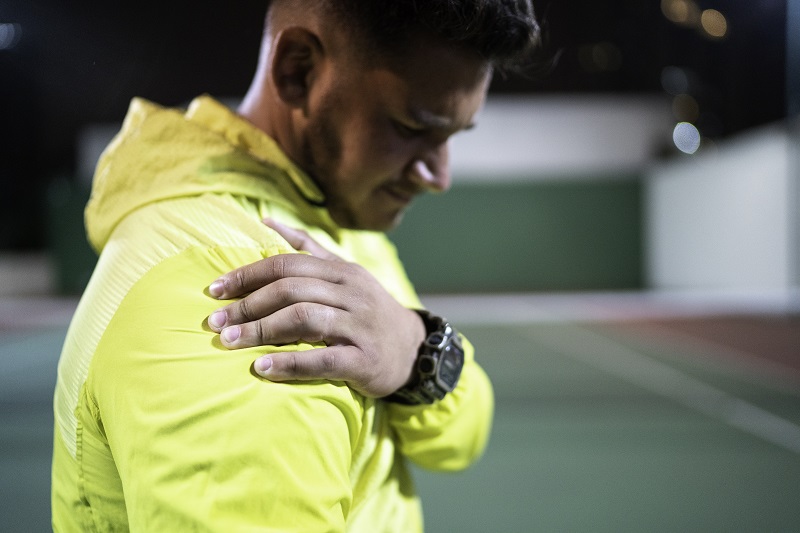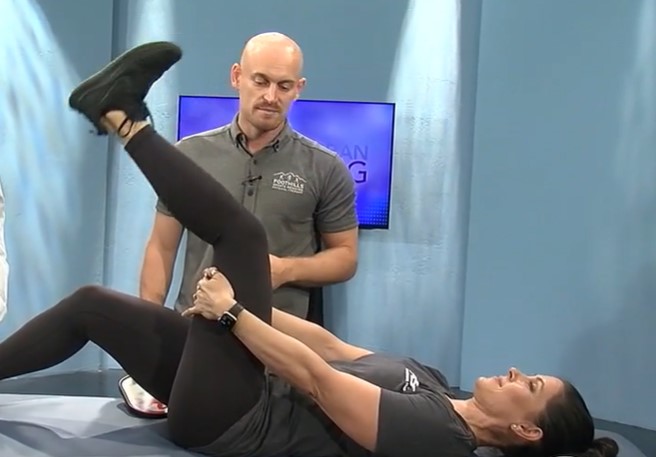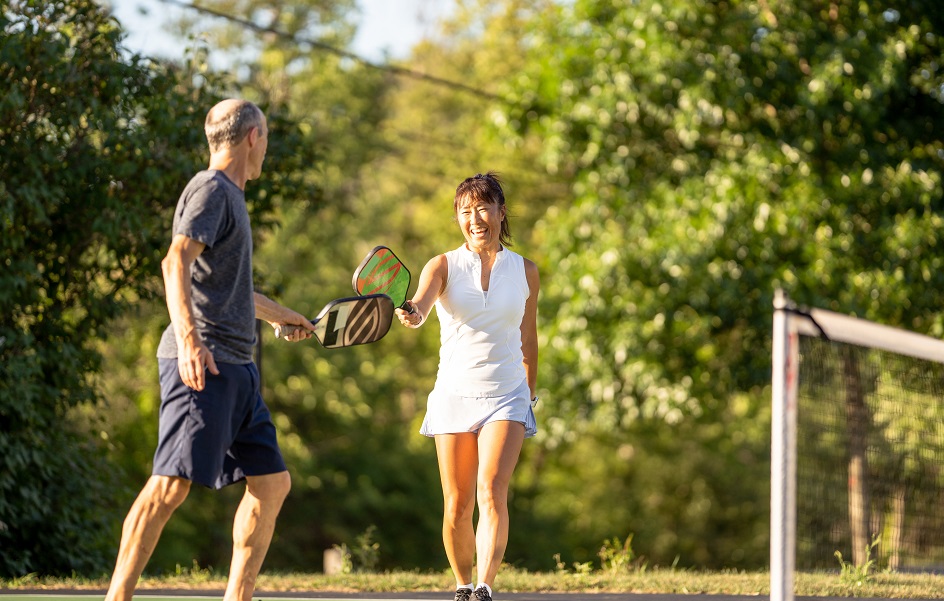By Adam Halseth, PT, DPT, SCS, TPI M-3 | Northeast Scottsdale
Pickleball mania is sweeping the country in Scottsdale and around the Metro Phoenix area. Everyone, from kids to seniors, is picking up a paddle and trying their hand at the fastest-growing sport in the U.S., leading to a fast rise in pickleball injuries.
The number of people playing the trendy racket game has nearly doubled in the last two years. According to USA Pickleball, 4.8 million people are now playing the sport. That has resulted in an estimated 19,000 pickleball injuries each year, which has jumped significantly over the last ten years.
Pickleball is a cross between tennis, ping pong, and badminton, but like tennis, there are a lot of quick bursts of speed, side-to-side shuffling, and backward pedaling. Because of this, physical therapists at Foothills Sports Medicine are seeing more patients suffering from pickleball pain. I have personally treated injuries from shoulders, elbows, knees, and everything from head to toe.
Related content >> ABC 15’s Sonoran Living – Pickleball Injuries
Common Cause of Pickleball Injuries
I am seeing a steady rise in patients of all ages injured from playing pickleball. One of the most common reasons for injury is that people who aren’t used to moving or motions with side-to-side, overhead repetitive movements, their bodies aren’t ready or prepared for this type of activity, causing overuse-type injuries. When they come in, we assess what led to their injury, whether that’s due to flexibility, stability, or muscle weakness. From there, we perform hands-on manual therapy, soft tissue therapy, or dry needling and get them started on a treatment of exercises and stretches to help them regain their strength and get back on the court.
Common Pickleball Injuries & Treatment Exercises

Ankle Sprains:
Short runs and agility movements tend to lead to ankle sprains. Treatment Exercise: Ankle alphabet – With your leg in front of you, use your foot to trace the letters of the alphabet in the air.
Achilles Tendonitis:
High-impact movements like jumping on the court can aggravate Achilles. Treatment Exercise: Heel raises – Stand with feet shoulder-width apart. Rise on your toes and slowly lower for 2-3 seconds.
Knee Strains:
Pivoting in pickleball can lead to meniscus injuries, LCL/MCL injuries, or general aggravation or inflammation in the joint. Treatment Exercise: Leg extensions – Sit in a chair with feet flat on the floor. Lift your leg straight in front of you, pause, and return to the starting position.
Tennis/Pickleball Elbow:
Backhanding can aggravate the outer part of the elbow and cause inflammation or, in some cases, microtears of tendons. Tennis/Pickleball elbow happens when the tendons that connect your lower arm to the outside of the elbow bone become swollen and inflamed. Treatment Exercise: Wrist curls – Hold a small dumbbell or bottle of water in hand and lay your arm on a flat surface – palm up. Lift using your wrist and lower slowly. Repeat with palm facing down.
Shoulder Injuries:
Reaching overhead to hit the ball can irritate the shoulder muscles, including the rotator cuff. The irritation could lead to damage or tendonitis of the rotator cuff. Treatment Exercise: Doorway stretch – Stand in an open doorway with arms on each side of the frame. Keep hands at or below shoulder height and lean forward through the doorway for a light stretch.
All the exercises above are general and basic exercises that will help a majority of minor aches and pains. However, if the pain persists or worsens, I recommend you seek professional or specialist care.
For mild-low grade sprains or strains, I initially prescribe R.I.C.E. – rest the area, ice the area, compress with plastic wrap to prevent swelling, and elevate the area to limit swelling. But if the pain persists for more than a few days, it’s time to come in and get treatment because you don’t want to stay inactive for too long. When starting a new sport, like pickleball, our PTs offer pre-sport program assessments to help prevent injury.

How to Avoid Pickleball Injuries
1. Warm-Up
PTs recommend a brisk walk or light jog, side shuffles, stretching, and single-leg balance exercises before you take the court. Try some of these exercises in the video below.

2. Pre-Sport Program Assessment
Before playing, get a baseline assessment to determine flexibility, balance, and strength. For example, PTs can give exercises such as squats, planks, and push-ups to increase stability and strength.
3. Proper Footwear and Equipment
Paddles come in different sizes, shapes, and weights. Consider a lighter paddle and a smaller handle if you have a weaker grip. You may consider a heavier paddle with a broader handle if you have more extensive hands and a firmer grip. Shoes that offer stability can also lessen the chance of spraining an ankle.
Why is Pickleball so Popular?
Pickleball is easier than tennis; the wiffle-like ball is less bouncy and doesn’t fly as fast as a tennis ball. The paddle is easier to hold than a tennis racket, and layers have less ground to cover as the court is smaller than a tennis court. The game is also slower-paced, allowing for more socialization.
Pickleball is a great game, and Foothills wants people of all ages to safely enjoy pickleball, or any sport, with our tips to prevent accidents on the court and avoid in-clinic treatment. If you experience an injury and rest and at-home treatment aren’t helping the pain, schedule an appointment at any of our valley-wide clinics. Call us if you’re interested in a FREE pain assessment or a sports program assessment.




